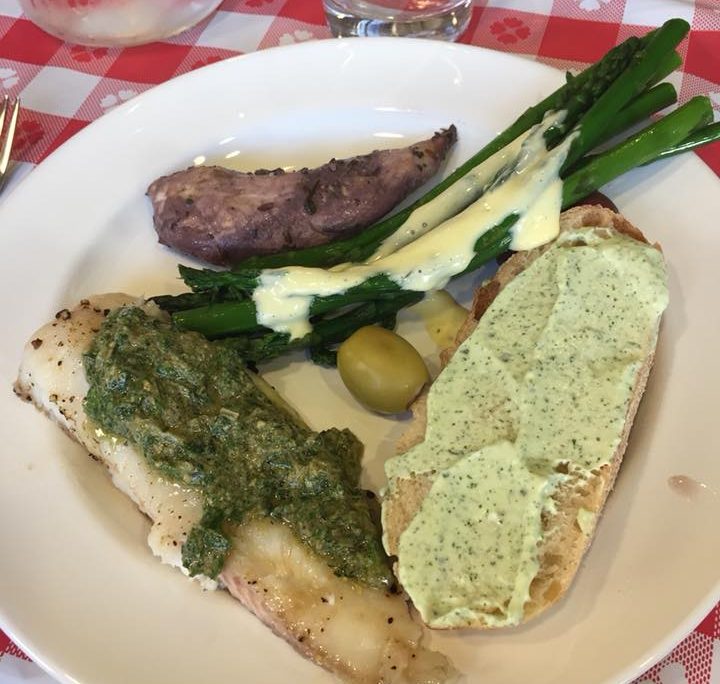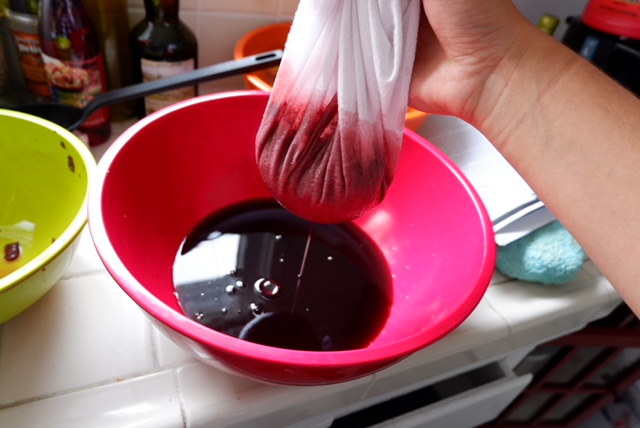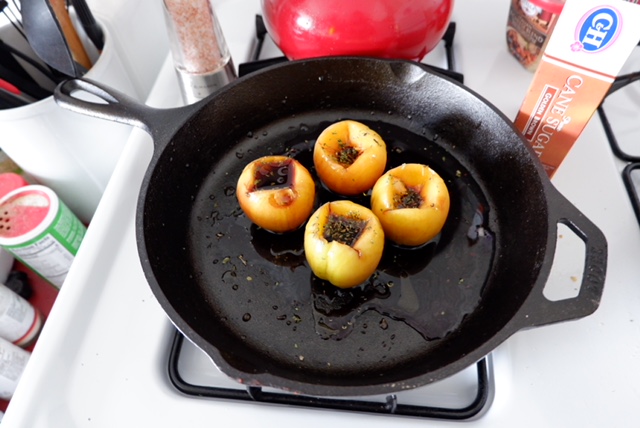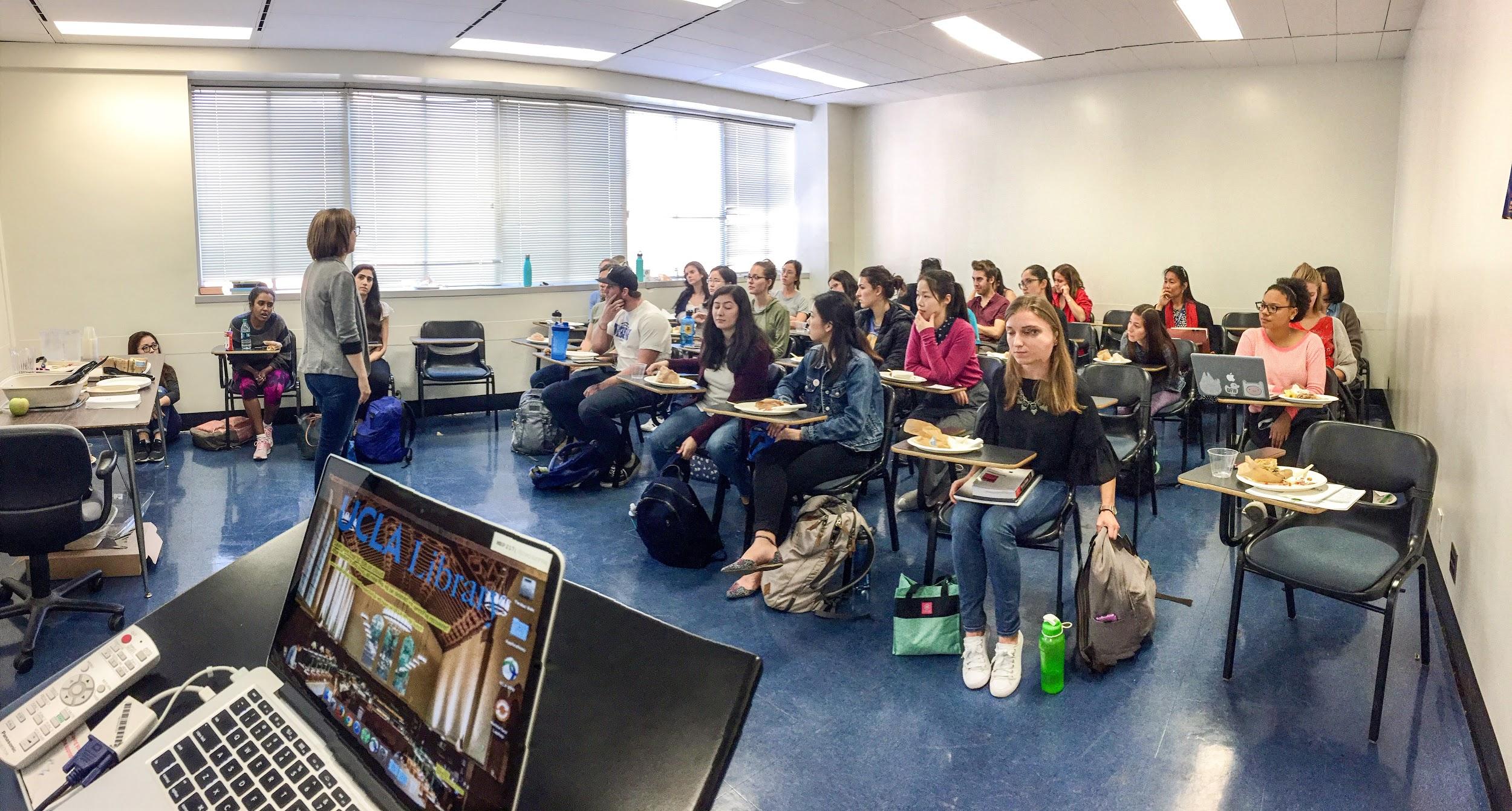Faculty and Staff
Click here to add your own text
The trans-disciplinary course Food and Medicine in Antiquity, taught by Alain Touwaide during Spring Term, culminated with a Roman dinner organized in collaboration with The Huntington in San Marino. In keeping with the theme, a centuries old text took center stage: an ancient cookbook known as Apicius, De re coquinaria (On the culinary art). Though attributed to Marcus Gavius Apicius, a wealthy 1st century BC/AD Roman gourmet, the cookbook is a 4th/5th century compilation that includes some recipes possibly dating back to Apicius.
On Sunday June 3, students enrolled in the course who come from a vast array of disciplines (including but not limited to classics, history, anthropology, biology, microbiology, environment studies, economics, communication, design, arts, and theater), enjoyed a 5-course menu in the Mediterranean tradition. Student and apprentice chef Sophia Denison-Johnston created this menu: for appetizer a cheese- and garlic spread with olives; for the main course, chicken in red wine and garum, fish with a pesto-like mix of herbs and spices, and asparagus with a mousseline; for dessert, dried fruits.

This experience of applied history was a truly unique opportunity to bring the classics to life and to explore the roots of the Mediterranean diet. Not only did student enjoy its health-promoting benefits, they also engaged with a cultural approach to nutrition and the human dimension of collaboratively preparing and enjoying a meal.
The Semel HCI Center invited Sophia Denison-Johnston and Andrea Zachrich, students in the course, to share their experience of preparing Apicius’ dishes.
with Andrea Zachrich


Apicius’ text
Apicius IV.5.4
Take firm, early or undersized fruits, wash them, remove the stone and put them (to cook) in cold water and then arrange them in a dish. Pound pepper, dried mint, pour on liquamen, add honey, passum, wine, and vinegar; pour over the apricots in a dish, add a little oil and let it come to heat over a gentle fire. When it is simmering, thicken it with starch, sprinkle with pepper and serve.
This recipe does not give the cook much to work with, and some of its ingredients do not exist anymore, such as the garum. I attempted to find ingredients as close as.
Ingredients
5 Apricots
1 tablespoon pepper
1 tablespoon mint
1 tablespoon fish sauce
2 tablespoons honey
2 tablespoons sweet raisin wine
2 tablespoons red wine
2 tablespoons balsamic vinegar
Extra Virgin Olive Oil
1 tablespoon cornstarch
Substitutions
Directions

with Sophia Denison-Johnston

Apicius’ text
Sauce for Boiled Fish
Apicius X.1.2
Pepper, lovage, cumin, onion, oregano, pine nuts, date, honey, vinegar, liquamen, mustard, a little oil. Serve the sauce hot. If you want, add raisins.
Peas
Apicius V.3.4
Cook the peas, stir them and put the pan in cold water; when it has gone cold, stir again. Chop onion finely with cooked white of egg, season with oil and salt, and add little vinegar. Pass cooked egg yolk through a sieve on to the peas in their serving dish. Poor green oil on top and serve.
Ingredients (with substitutions for modern times)
Preparation: While Apicius lists the ingredients and sometimes will refer to method, usually the methods are assumed to be known. Here, I have outlined in greater detail the methods I used when cooking these two dishes.
Peas
Fish with sauce

Taste
The peas were delicious! The peas themselves were sweet, with a more salty and savory flavor that balances out the sweetness of the peas. The dish was very light, yet filling, and satisfying along with the fish.
The fish itself was quite plain, but this is intentional in order to highlight the sauce. The sauce tastes much like a pesto; the strongest flavors coming through were the herbs and nuts, with the sweet dates and honey balancing out the sharper vinegar, bitter herbs, pepper, and fish sauce.
References:
Christopher Grocock and Sally Grainger (eds and trs.), Apicius. A critical edition with an introduction and an English translation of the Latin recipe text Apicius. Totnes: Prospect Books, 2006, pp. 203, 213 and 301.
Patrick Faas, Around the Roman Table. New York, NY, and Basingstoke: Palgrave MacMillan, 2003, pp. 131, 151, 153
—
We often don’t think of food security as being an issue for college students. With dining halls and plenty of on campus restaurants, it would seem as if food is available to all students at all times. However, according to a 2016 study, 19% of students surveyed indicated having “very low” food security, while another 23% had “low” food security. Food security, according to the United Nations, exists when everyone has economic, physical, and social access to nutritious food. This means over 40% of the UC student population struggles to obtain nutritious food regularly.
From the same 2016 survey, only about 17% of the students received information on resources available, either on campus or in the community, to help combat food insecurity. Thus, this article strives to explain the variety of resources for UCLA undergraduate or graduate students, as well as staff and faculty, who may be experiencing food insecurity.
Some programs on UCLA’s campus are geared specifically towards students. For instance, the Economic Crisis Response meal voucher program sets aside a certain amount of meal vouchers, which can be used in the dining halls, every year for students in need. These meal vouchers can be picked up at the LGBT Center, Dashew, Bruin Resource Center (BRC), Community Programs Office (CPO), and the Transfer and Veteran student centers. Swipe Out Hunger at UCLA helps to enrich this program by collecting unused dining hall swipes at the end of each quarter and converting those swipes into meal vouchers.
The CPO Food Closet is another student-oriented resource on campus, which can be found in the Student Activities Center (SAC), room 111. Founded in 2009, the Food Closet aims to gather uneaten food from events, that would normally go to waste, or donations, and redistribute it to students who may be in need. The Food Closet is open Monday through Friday from 8am-6pm.
CalFresh, a California-government sponsored resource, is available not only for students, but for faculty and staff who are eligible as well. When enrolled in CalFresh, you could receive up to $194 a month for groceries which can be spent at places like Ralph’s, Whole Foods, and Trader Joe’s. While CalFresh is a state-wide resource, UCLA has its own CalFresh Initiative, located in SAC CPO 105E. This initiative, dedicated to enrolling eligible students in CalFresh, also has a Pre-Screening Tool to help you find out if you’re eligible for the program.
There are also many resources just outside of UCLA, like Café 580. Café 580 is located at 580 Hilgard Avenue, just across the street from campus and offers free food, internet, and study space for students. Café 580 also has various events advertised on their Facebook page to provide social connections along with food resources.
The Santa Monica Food Bank is a community resource, also available for UCLA students, staff and faculty. Located at 1710 22nd Street, their goal is to help provide food to low-income families in hopes of alleviating the stress of deciding between buying food or paying rent.
A nationwide resource available to UCLA students, both during their time at UCLA and beyond, is Dial 2-1-1. 2-1-1 provides resources ranging from housing, health and other crises needs. Specifically, it can give information on food pantries and other programs that can help address food insecurity in your community.
UCLA and its surrounding community offers a wide variety of food insecurity resources. While we may not be able to ensure food security for all students, we at least can make sure everyone is aware of the resources available, and hopefully takes advantage of them if they are in need.
To learn more about food security at UCLA, visit the food security page of our website.
Aurora Finley is an undergraduate student at UCLA majoring in English. Along with blogging for the UCLA Healthy Campus Initiative, she is the Sexperts Executive Director for the 2017-18 academic year. She is also a regular volunteer for UCLA’s Habitat for Humanity chapter and blogs for the online UCLA Odyssey community.
Did you know an estimated 30 to 40% of the U.S. food supply goes to waste? That’s approximately 133 billion pounds of food, worth about $161 billion in 2010 according to the USDA. On top of that, 1 in 5 fruits and vegetables grown in the U.S. never make it off the farm because they do not meet grocery store standards, causing them to go to waste.
The founders of Imperfect Produce decided to change this. The organization strives to reduce the waste of nutritious and delicious fruits and vegetables by delivering ‘ugly’ produce directly to customers’ homes. To date, Imperfect Produce has saved 11.5 million pounds of produce, 575 million gallons of water, and 39.3 million pounds of CO2. And compared to grocery store prices, purchasing through Imperfect Produce saves you about 30-50%!

On January 18th, the Public Health Nutrition Club (PHNC) hosted Imperfect Produce as part of their quarterly Colloquia Series, supported in part by the UCLA Partners of Excellence for Leadership in Maternal and Child Health Nutrition (MCH). PHNC is a graduate student group based in UCLA’s Fielding School of Public Health (FSPH) that promotes nutrition education and food literacy through campus gardens, healthy cooking demonstrations, and other activities. Previous colloquia have included inspirational local organizations and speakers such as Food Forward, LA Food Policy Council, and Angie Tagtow from the USDA.
Alyssa Seibert, the Outreach Team Lead from Imperfect Produce LA, visited FSPH to educate 32 students on the history and philosophy of the organization, how to build a more sustainable and effective food system, and how to help fight food waste. She dispelled many of the myths around “ugly produce” – how the bruising or scarring on the exterior of an orange does not affect the taste or nutritional content of the fruit. Alyssa, along with outreach associate David Raffaelle, signed up a quarter of attending students for the subscription services of Imperfect Produce, spreading the message that eating uglier can make a huge impact!
Students found her presentation informative, engaging, and inspiring. Those in the room left with a sense of how significant of an issue food waste is in the United States, but also filled with hope that they can help make a difference by joining environmentally conscious companies in the fight to create a more sustainable and healthy world.

For PHNC’s next Colloquium, come join us for a Nutrition Advocacy Training with Frank Tamborello, the Executive Director of Hunger Action LA. Learn how Hunger Action LA is working to end hunger and promote healthy eating through advocacy, direct service, and organizing. The advocacy training will be held on Thursday, March 8th from 12 to 1 PM in FSPH Room 61-269. RSVP here.
Interested in nutrition policy? The MCH Nutrition Leadership Training Program presents 2020-2025 Dietary Guidelines for Americans: The Role of Science, Politics, and People. The policy seminar will be held on Wednesday, April 4th from 5 to 7 PM in the NRB Auditorium featuring Angie Tagtow, MS, RD, former Executive Director of the USDA Center for Nutrition Policy and Promotion and Lorrene Ritchie, PhD, RD, Director of the Nutrition Policy Institute, University of California Division of Agriculture and Natural Resources. RSVP here.
For upcoming events from the PHNC, join our Facebook group.
For more information about Imperfect Produce, visit their website.
About the Public Health Nutrition Club:
 Supported by the UCLA Partners in Excellence for Leadership in MCH Nutrition, the Public Health Nutrition Club at UCLA believes that good nutrition is the basis for a healthy life. Our purpose is to provide nutrition education to the public and volunteer opportunities for our members to network and develop leadership skills. With roots in Maternal and Child Health, we focus on pre- and post-natal nutrition as a fundamental right for all mothers and children. This program is supported in part by UCLA Partners in Excellence for Leadership in MCH Nutrition, a nutrition training program at the FSPH funded by the Maternal and Child Health Bureau, Health Resources and Services Administration, DHHS and directed by Dr. Dena Herman.
Supported by the UCLA Partners in Excellence for Leadership in MCH Nutrition, the Public Health Nutrition Club at UCLA believes that good nutrition is the basis for a healthy life. Our purpose is to provide nutrition education to the public and volunteer opportunities for our members to network and develop leadership skills. With roots in Maternal and Child Health, we focus on pre- and post-natal nutrition as a fundamental right for all mothers and children. This program is supported in part by UCLA Partners in Excellence for Leadership in MCH Nutrition, a nutrition training program at the FSPH funded by the Maternal and Child Health Bureau, Health Resources and Services Administration, DHHS and directed by Dr. Dena Herman.
Sakura Takahashi is pursuing her M.P.H. in the Department of Community Health Sciences at UCLA’s Fielding School of Public Health. She is also a dietetic intern with the VA Greater Los Angeles Healthcare System looking to become a registered dietitian. Sakura is a current MCH Nutrition Leadership trainee under Dr. Herman and is keen to gain exposure in interdisciplinary and collaborative methods for improving the health and well-being of maternal, infant, and child populations from a nutritional standpoint.